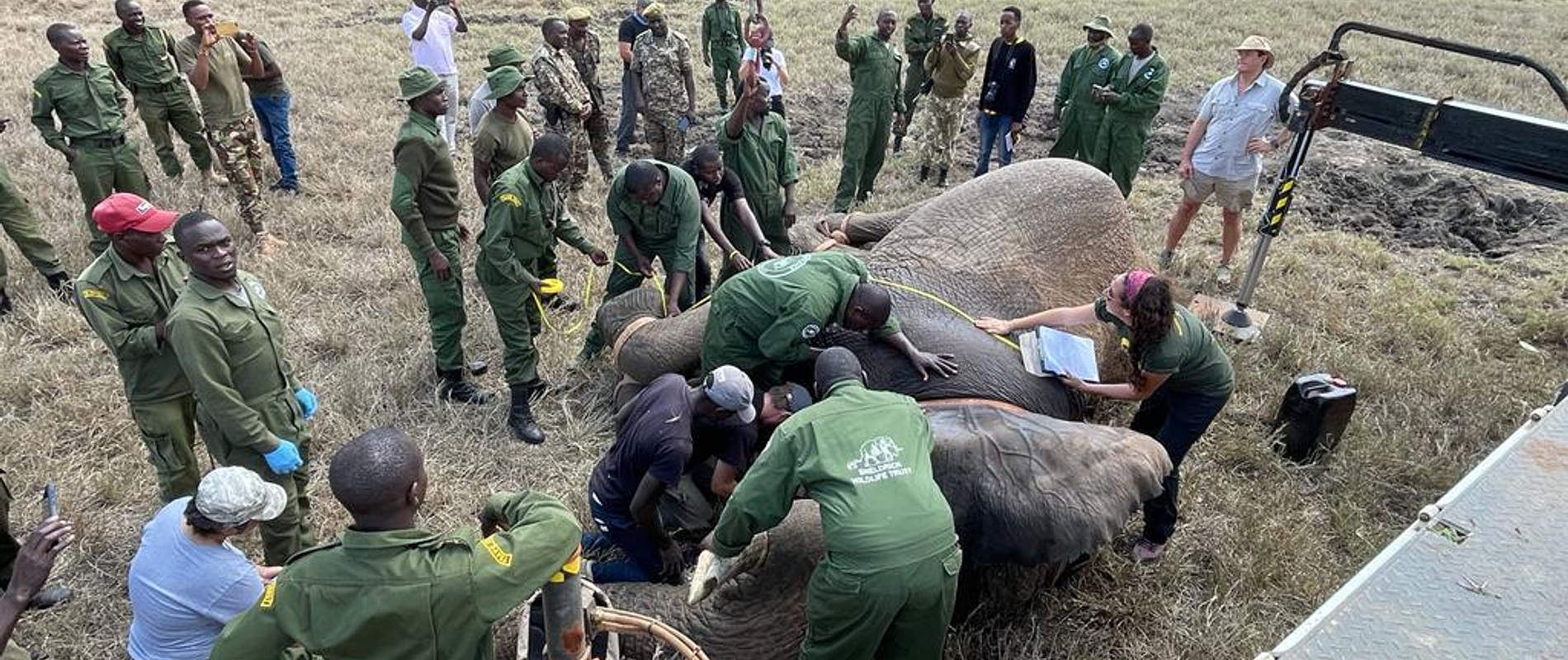On 7th June, we embarked on an elephant-sized operation to relocate a troublesome bull. Our mission was to move him deep into Tsavo, sparing him and a local community from certain conflict.
Human-wildlife conflict is a challenge across Kenya. However, the current drought conditions have exacerbated the issue. As food sources dwindle, more and more creatures are foraging further afield. Elephants have prolific appetites, and when they venture onto community land, conflict often ensues.
Fencelines are a very effective deterrent, keeping elephants and other wildlife out of community lands. However, this particular bull was more determined than most. He had taken up residence in the northern edge of Tsavo West. While he spent his days within the park, he had developed a bad habit of breaking through the boundary fence at night and helping himself to crops on neighbouring farms.
Understandably, the bull was an unwelcome guest in the community. His presence not only hurt farmers’ livelihoods, but also put lives at risk. While most elephants are opportunistic crop-raiders, he had turned it into a nightly ritual. KWS determined that a relocation was necessary in order to stop the wayward bull’s nocturnal excursions. Dr Poghon, Head of the KWS Capture Unit, and Dr Limo, Head of SWT/KWS Tsavo Mobile Veterinary Unit, would oversee the operation.
First thing in the morning, our customised crane truck drove towards the bull’s patch. Meanwhile, our SWT/KWS Anti-Poaching Team liaised with the community to confirm his last known location. He had been up to his usual antics the night before, so our fixed-wing pilot mounted an aerial search to find him.
Our pilot discovered the break in the fence right away, but the bull was more elusive. He was a distinctive looking fellow: The community reported that he only had a single tusk, which was broken down to an unusually short length. After circling the area for quite some time, battling gusting winds as he scoured the wilderness below, our pilot decided to give it one last attempt. This was the lucky pass, as he finally spotted the one-tusked bull.
As soon as the bull’s coordinates were reported, our helicopter pilot flew to Kamboyo airstrip, where Dr Poghon and Dr Limo were waiting. We also picked up our friends from Save the Elephants, who would fit the mischievous bull with a radio collar to monitor his movements. After the ground teams got into position, Dr Poghon darted the patient from the helicopter. He was a big elephant and took quite some time to succumb to the anaesthetic.

Once the anaesthetic took effect, it was time to get the bull aboard his transport
Once he was down, everyone moved quickly. While Save the Elephants secured the radio collar around his neck, our teams put ropes and slings in place. With one mighty lift, the crane hauled him from the ground and onto the flatbed of the truck.
Moving a supersized patient requires extreme precision. Aside from the veterinary expertise needed, there are also practical considerations. For instance, an elephant’s legs must always be facing the left side, because they cannot risk jutting into oncoming traffic. Once he was secured aboard the truck, it was time to embark on the journey to Tsavo East. Dr Poghon and Dr Limo monitored the bull throughout the drive, ensuring his heart rate and breathing remained steady.

With one deft motion, the crane gently lifted the elephant aboard the truck
After an uneventful journey — although the sight of a ‘slumbering’ elephant certainly surprised other drivers on the road! — the convoy entered the sanctity of Tsavo East. They continued deep into the park, until they reached a remote area near the Galana River. With its easy access to water and plentiful food, one can understand why this part of Tsavo is a favourite haunt for elephants.

With his collar fitted and straps keeping him in place, the bull was ready to go to his new home
The anaesthetic was reversed and the bull groggily rose to his feet. After peering around, he strode off into the wilderness, off to discover his new patch.
Human-wildlife conflict is a complex issue — one that requires outside-the-box solutions. Working in partnership with KWS, Save the Elephants, and the local community, we were able to find a win-win outcome for everyone. Now, the community can rest easy without their unwelcome guest. Our wayward bull, meanwhile, is in a safe place where his nighttime ramblings won’t put anyone at risk.
